Are you concerned about your e-bike’s battery temperature increasing? Do you get random shut-downs when the battery’s hot and wonder what the reason is? I’ve got you covered.
E-bike batteries do get hot sometimes, and they naturally generate heat when in use. This increased heat can happen due to multiple reasons such as overusing the battery, degradation, and hot weather over 80 degrees Fahrenheit.
However, there’s a lot more to understanding your electric bike battery if you want to stay safe and have a long-lasting battery.
Read on to discover why your electric bike battery gets hot, what you can do to avoid overheating, and how to extend battery life.
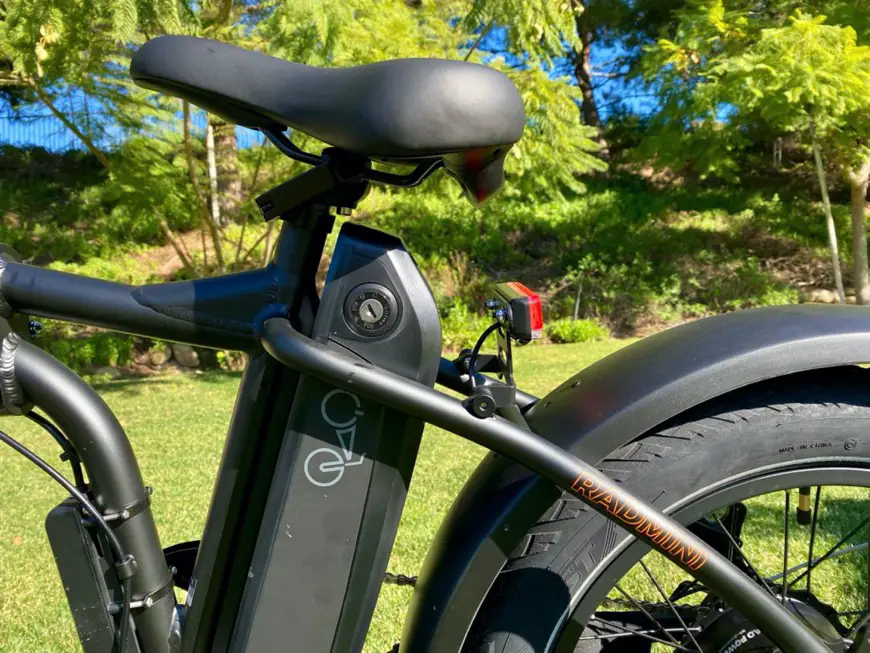
Batteries Get Hot (The Causes)
As most e-bikes are equipped with a battery management system that uses a lithium battery, I’ll outline why these types of batteries get hot.
Environment
In summer, electric bicycles are a great form of entertainment. No matter if you’re riding by the sea with your friends or cruising some of your favorite lunch spots, you’re likely to be on two wheels a lot during summer.
Hot weather and direct sunlight will increase your e-bike’s temperature and you’ll end up with a warmer battery. Temperatures above 45 °C (113° F) aren’t favorable for lithium-ion batteries. It may tolerate up to 50 °C (122 °F), but 45 °C (113 °F) is the maximum tolerable temperature in many cases.
However, some have a battery cover that protects them from extreme weather. It will prevent accidents and save the battery from degrading. You need to take special care of lithium-ion batteries against heat because they’re prone to explosion and swelling.
Chemical Reactions or Electrical Resistance
During electrochemical reactions inside the battery, heat is generated. When lithium ions travel from the anode to the cathode (and the other way round while charging), this movement generates heat. That means batteries always have some degree of heat while charging and discharging.
This is also a concern when attempting to charge your battery with a car battery.
Degradation
Lithium batteries naturally heat up when the device is in use and e-bike batteries are no exception. This heat, in turn, reduces the battery performance.
When your battery wears down and loses efficiency, it will need more energy to power your electric bike over the same distance. As a result, it will heat up even more.
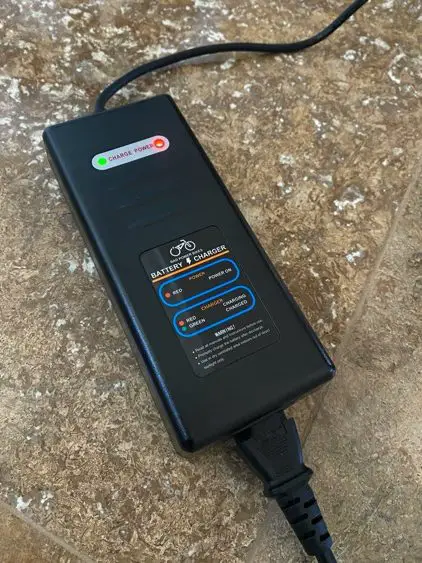
Can Electric Bike Batteries Overheat?
E-Bike batteries can overheat just as any lithium batteries can. Overheating has a greater chance of happening if you are using an old or damaged e-bike battery that is also exposed to high temperatures.
As heat is generated naturally by using the battery, any amount of degradation can increase the heat and cause further damage, leading to a battery explosion.
However, this really isn’t that common in modern electric bikes. And there are ways to protect your e-bike battery from overheating and exploding as you’ll see below.
How To Extend Your E-Bike’s Battery Life
A lithium-ion battery will degrade over time and will lose battery capacity. Rebuilding your electric bicycle’s battery is probably the best way to increase its range, but it isn’t the only method. You can do many other things to make your e-bike battery long-lasting.
1. Choose a Trusted E-Bike Brand
The quality of the electric bike battery is one of the most important things you should consider before purchasing an electric bicycle. A battery’s quality will determine how long it lasts. Therefore, buying an electric bike from a well-established electric bike company (Rad Power Bikes is the largest North American brand, and it’s where I got my e-bike) that offers high-quality batteries should always be your first option.
Some electric bike companies even send two batteries with each bike, which is ideal.
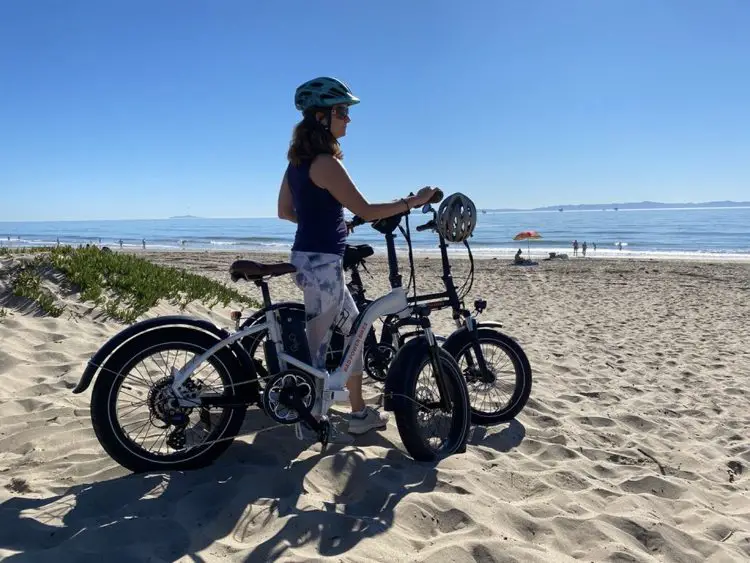
2. Read the Owner’s Manual
There are always some key points you might not know about lithium-ion batteries, so consider actually reading the manual. Don’t fully depend on your experience and knowledge, as you may have never heard of some of these cautions (e.g., Li-Ion batteries can catch fire if misused or paired with the wrong charger).
There’s also information about battery charge cycles in the manual, so your battery will last longer if you follow the instructions. Understand your charger and battery. Make sure you read your electric bike owner’s manual and any warning stickers on it. For more information, ask your local bike dealer or electric bike brand you purchased from.
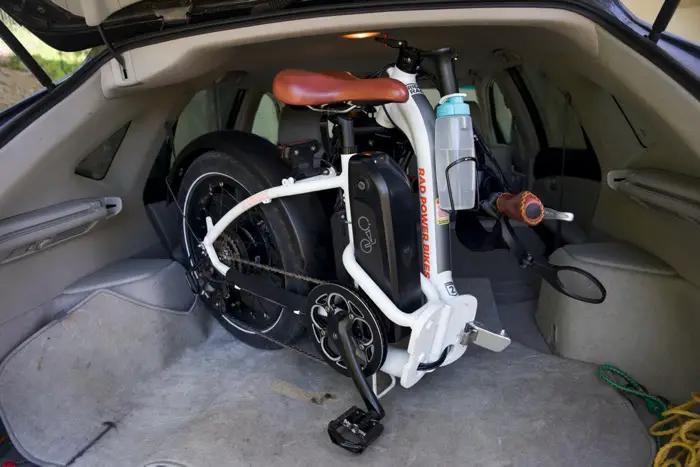
3. Create the Best Environment
As mentioned, the surrounding environment can greatly affect the performance and life of electric bike batteries. Your battery cycle life will last longer in a better environment.
Keep the Temperature Average
Whether it’s freezing outside or hot as an oven, you need to keep the battery cells at a stable average temperature.
Battery capacity will significantly reduce in extreme temperatures because some power components are sensitive to heat and cold. To protect your battery from temperatures and extend its life, keep it away from direct sunlight and warm places.
Remember that your car isn’t a good place for leaving your battery during summer. Lithium batteries work better in cool temperatures. The best temperature to store a Lithium-ion battery is in a normal range between 50-77 °F (10-25 °C).
Store your electric bike battery indoors at room temperature in cold weather and only attach it to the bike when you’re about to leave.
Use higher electric assistance levels. As a result, the battery will work harder, helping it remain warm in cold temperatures.
Keeping your battery inside is typically the best solution.
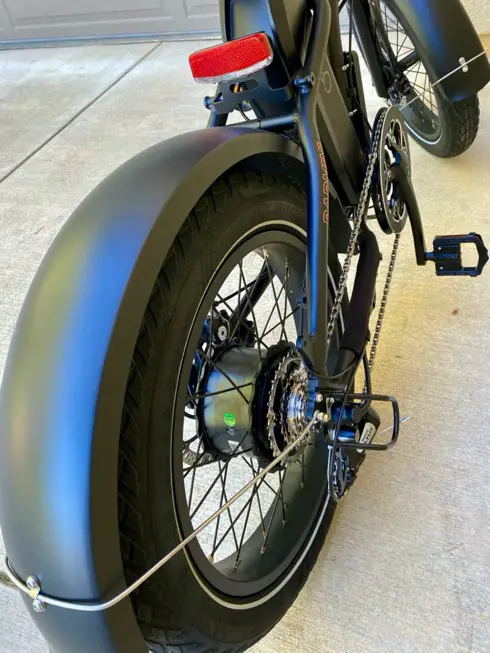
Don’t Ride in Extremely Hot Weather
You should avoid riding your e-bike when it’s above 113 °F (45 °C) to keep the battery healthy and maintain its significant range.
As with most electronics, e-bikes may shut themselves down when they’re overheated. That’s because the battery cells want to protect themselves from degrading. If this happens while riding, don’t be scared. Move the bike to a cool place and wait for an hour before turning it back on.
Keep the Battery Dry
Researchers suggest keeping your Li-ion e-bike batteries in dry places as humidity can adversely affect them. During manufacturing, exposure to moisture could cause the lithium battery to lose quality, resulting in:
- Reduced battery life
- Reduced capacity, causing problems in performance
- Raised chances of explosion
Lithium is highly reactive with water, creating a flammable substance that can catch on fire.
Here’s a video of a lithium battery catching on fire after being dumped into the water:
4. Charge the Battery Properly
It’s essential to know how to charge the battery properly since it directly affects the battery’s life.
Fully Charge Before Your First Trip
Before your first ride on an e-bike, make sure the battery is fully charged. Refer to the e-bike owner’s manual for how-to instructions. It may take four to eight hours to charge the battery fully. Remember to unplug the charger once the battery’s full, and don’t keep it charging for a long time.
Use the Bicycle’s Own Charger
The chargers for different battery types will vary based on their voltages and amps (or Watts). Most electric bikes have lithium-ion batteries, which are 36 Volts or 48 Volts with 2 to 7 amps.
Use the charger that comes with the battery because it’s the most suitable one for your e-bike. You should never mix and match chargers because it may cause an explosion if the voltages are different. Further, if you replace or add a second one, make sure it is a fully interchangeable battery.
Read the manual to understand your charger’s specifications and look for any possible caution.
Don’t Fully Discharge
Discharging the battery to 0% is also harmful and should be avoided. According to a study, excessive discharge can result in capacity degradation and internal short circuits.
While it’s okay if it happens from time to time, avoid deep discharging the battery regularly.
Don’t Store an Empty Battery
If you leave the e-bike battery uncharged for a while, it will wear down and damage the battery peformance. Remember to charge the battery before storing it for weeks or months at a time. Additionally, don’t leave the battery empty. Charge the battery to a half-filled state (40-70%).
Use Light Timers
Lithium-ion batteries are better pulled out at 80-90% instead of fully charged. That doesn’t mean you should sit for hours and watch your battery get charged, though. You can get a light timer and set it for two or three hours. Most batteries reach 80-90% within that time.
5. Check Tire Pressure
Your e-bike battery range also depends on the proper tire pressure. It’s because your battery uses less energy when your tires are maintained at their maximum air pressure rating. Thus, riding on hard surfaces with low tire pressure can lead to battery overheating, which will cause degradation over time.
Therefore, you should always keep track of your e-bike’s tires.
6. Inspect Your Battery
Beware of corrosion on the battery terminals, which appears as green dust or film, and make sure the battery is only warm to the touch when charging and not hot, which indicates damage.
Make sure the battery is securely attached to the frame before you ride.
If your battery needs to be replaced, make sure the new battery is the same brand and version as your old one. If you switch it up and use third-party batteries or chargers, you might overcharge the battery or damage its capacity.
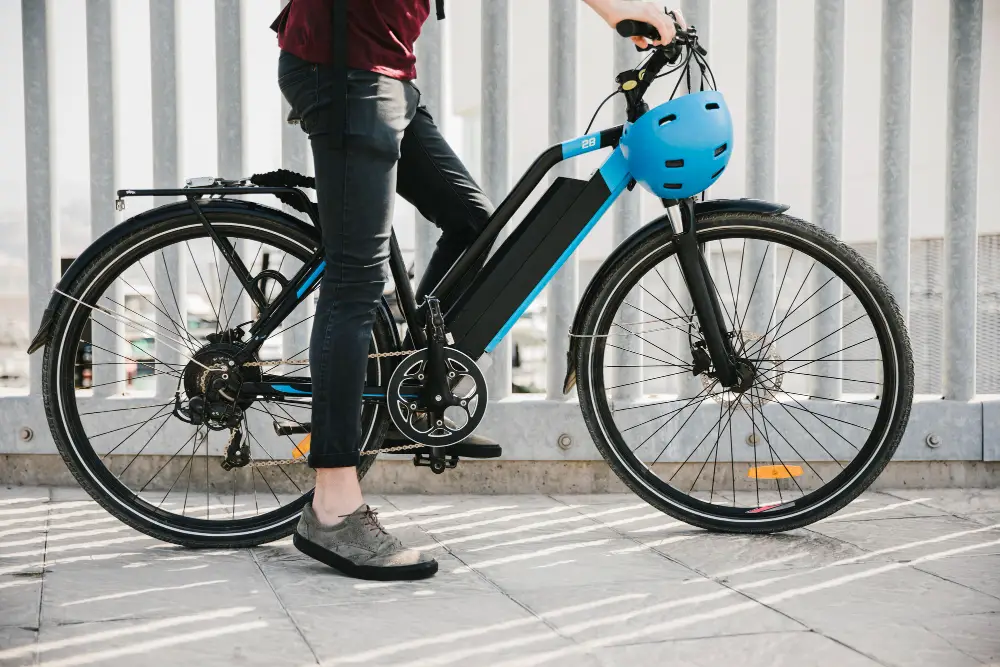
7. Put It in Pedal Assisted Mode
E-bikes usually have three modes of riding:
- Cycling mode: This is 100% powered by a human, the same as a regular bike.
- Pedal assist (eco mode): This type of cycling uses a little bit of power to boost your riding.
- Fully electric; throttle: This is using 100% electric power by use of a throttle. Using electric mode continuously puts more strain on the battery than eco mode. Still, it’s perfectly acceptable to do this at times.
Frequently using the cycling mode will leave your battery idle, while continuously using the all-electric mode will drain your battery.
Typically, you should use assisted cycling mode as often as possible. Doing so helps regulate battery use; you get the most use from the battery without overusing it or sucking it dry.
You should also consider your physical condition when selecting the driving mode.
Do E-Bike Batteries Get Hot: Bottom Line
As we’ve learned by now, electric bicycle batteries get hot for a variety of reasons, mostly environmental, and it’s best to keep your battery cool. However, the best way to keep your battery safe and efficient is to maintain a battery care routine.
The more time you invest into battery maintenance, the longer it will last, and the fewer heating problems you’ll come across.
Finally, if you want more information about maintaining a long-lasting battery, you can always contact experts and manufacturers online or talk to your local battery supplier.




